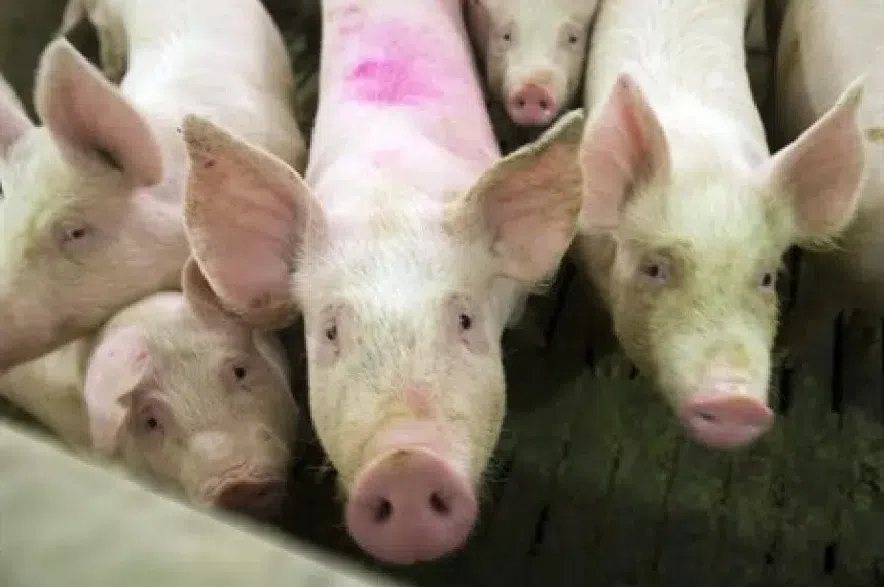Pig ear necrosis was first described in the 1960s, but since then it’s been nearly impossible to identify the cause of the painful animal affliction.
Until now, that is.
Read more:
- Farmers will lobby Ottawa for $50K guaranteed annual income pilot program
- ‘All hands on deck’: Federal agriculture minister looking for resolutions on tariffs
- ‘Valid’ questions for CFIA but few simple answers in wake of B.C. ostrich cull
New research at the University of Saskatchewan has identified the bacteria that causes pig ear necrosis – a fairly common type known as Fusobacterium necrophorum, which is found in the digestive tracts of many mammals, humans included. Necrosis occurs when the bacteria are transferred through saliva by pigs biting or chewing ears, a common habit of swine.
The university said a team led by Dr. Matheus Costa, an associate professor at the Western College of Veterinary Medicine, was able to confirm the findings in a lab setting, and the research was recently published in the journal PLOS One.
“It’s been around for so long and we were unable to effectively control it,” Costa said in a statement.
“I think now we can finally take a step towards controlling the disease and improving the quality of life of these animals.”
While it is not fatal, Costa said necrosis of the ears is painful and damaging for the afflicted animals, calling it an “ugly” condition that leaves pigs with lesions, affecting their growth and producers’ profits.
Costa said he has been exploring the condition ever since his own residency program, and the discovery was very heartening for him.
“It was a light at the end of the tunnel, that we can help improve the welfare of those animals for something that has been around for much longer than 50 years,” he said.
Costa and his team didn’t just discover the bacteria behind the condition; they’ve also developed a vaccine to protect against it. But because the bacteria is so common, Costa said eliminating it completely wouldn’t be realistic, though he noted that his research was able to reduce the clinical signs of pig ear necrosis by about half. A patent application for the vaccine has already been filed, the university noted.
The university said there are some other measures that could also help control necrosis in pigs, noting that ear-and-tail biting is common among animals that do not have enough stimulation in their pens. Costa said steps to improve pig welfare will be important to preventing the affliction, though there is still work to be done.
“We don’t fully understand (pig ear necrosis) yet. There’s a lot of research to be done about disease pathogenesis and progression. How does it develop? What can we do to better prevent it?” Costa said.
“There are many, many different venues this research will impact when it comes to the swine industry.”
The research was supported by the Saskatchewan Ministry of Agriculture, the university noted, along with members of the swine industry in western Canada.











